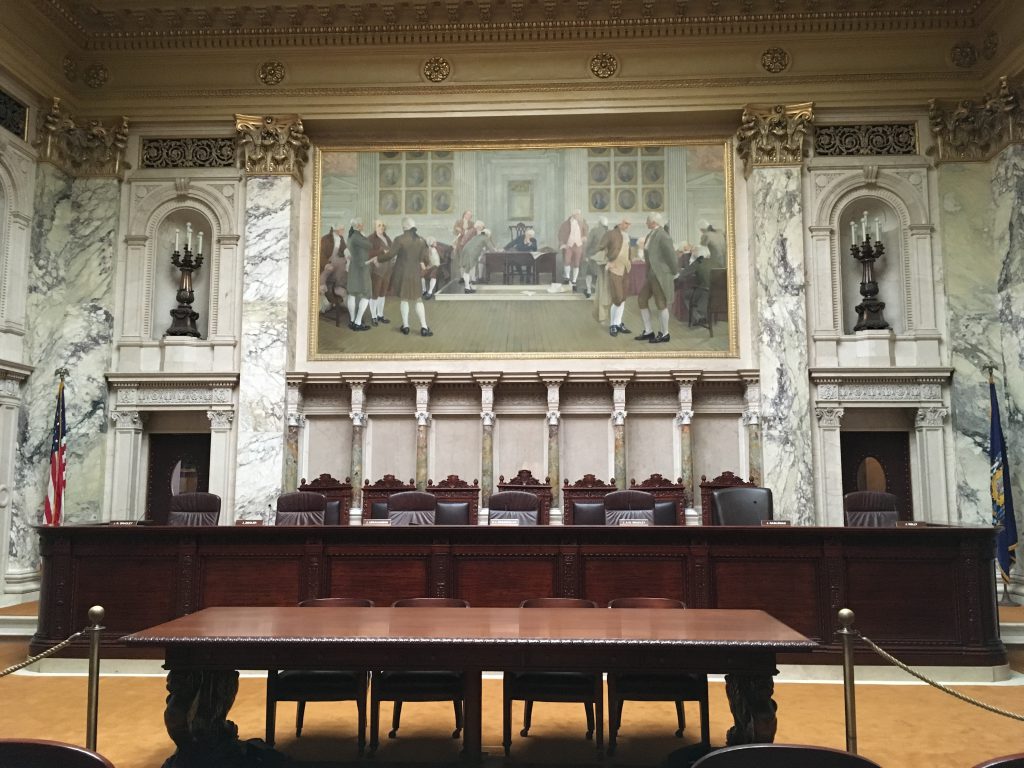Will State Supreme Court Cool Its Ideological Rancor?
As of August 1, its hostility toward experts and democracy won't fly.
With April’s election of Judge Janet Protasiewicz to the Wisconsin Supreme Court, the ideological balance of the court is expected to flip. Currently the seven justices consist of three conservatives (Patience Roggensack, Annette Ziegler, and Rebecca Bradley), three liberals (Ann Bradley, Rebecca Dallet, Jill Karofsky) and one conservative, Brian Hagedorn, who is willing to occasionally break with the other conservatives. On August 1, Protasiewicz will replace the retiring Justice Roggensack.
Notable targets of judicial ire are the Wisconsin Elections Commission, the state health department, and the Department of Natural Resources.
Attacks on “unelected bureaucrats” are a recurring theme from the conservative members of the court. Consider the first words in Justice Roggensack 2020 majority opinion in Wisconsin Legislature v. Palm:
This case is about the assertion of power by one unelected official, Andrea Palm and her order to all people within Wisconsin to remain in their homes, not to travel and to close all businesses that she declares are not “essential” in Emergency Order 28.
Between their decision and their various concurrences, the conservative justices manage to mention eleven times that Palm, the state’s health secretary, was “unelected.” They neglect to mention that Palm was appointed health secretary by Tony Evers, who was elected governor of Wisconsin.
The same theme recurs two years later. Consider these words from Justice Rebecca Bradley’s July 2022 concurrence in Teigen v. Wisconsin Elections Commission, in which the court banned the use of drop boxes and required that voters personally return absentee ballots:
When the state’s highest court refuses to uphold the law, and stands by while an unelected body of six commissioners rewrites it, our system of representative government is subverted.
What is going on here? Doesn’t it matter that it was Republican legislators who saw fit to establish the commission? In part, the conservative justices’ horror at decisions made by “unelected bureaucrats” reflects conservative ideology. Among some conservative law school professors there is a belief that the “regulatory” or “administrative” state is a threat to democracy. In this view, the regulatory are a threat because they sometimes combine elements of the legislative, executive, and judicial functions.
A major factor behind the growth of the regulatory state is the increasing complexity of modern life. Often neither judges nor legislators have the expertise needed to handle every detail of regulation, so they outsource the details to specialists with more expertise.
For example, Wisconsin election law does not mention drop boxes. The conservative group of justices takes that as a prohibition on drop boxes. By contrast, it can be argued that drop boxes, if carefully implemented, promote democracy by making voting easier and more secure. Thus, the elections commission in issuing guidelines for drop boxes has adopted the more voter-friendly position.
Following the 2010 census, Republican leadership in the Legislature, with the support of the Michael Best law firm, developed one of the most aggressive gerrymanders in the United States. Its aim was to make sure that Republicans maintained control of the Legislature under any likely vote scenario. In this, it was wildly successful. As Urban Milwaukee’s analysis showed, under the 2011 gerrymander, Democrats needed to win 54.7 % of the statewide vote to gain a majority of the 99 state Assembly seats; by contrast, Republicans needed only 45.5% of the statewide vote. Thus, for the decade it was no longer possible to infer that legislative actions accurately reflect a consensus of voters.
The release of the 2020 census required that new district maps be developed. The Legislature developed new highly gerrymandered maps that were vetoed by Governor Evers, whose maps were rejected by the Legislature in turn. Thus, the process of redistricting fell to the Wisconsin Supreme Court.
The three liberal justices advocated that a panel of federal judges be asked to assume responsibility for redistricting. As Justice Dallet argued:
the federal courts, comprised of judges insulated from partisan politics by lifetime appointments, are best suited to handle redistricting cases.
Instead, in November of 2021 the other four justices decided to go with a “least-change” approach. Justice Rebecca Bradley delivered the majority decision arguing this:
“Putting courts into politics, and compelling judges to become politicians, in many jurisdictions has almost destroyed the traditional respect for the Bench.” … A least-change approach safeguards the long-term institutional legitimacy of this court by removing us from the political fray and ensuring we act as judges rather than political actors.
It is worth pointing out that Rebecca Bradley was lying. Contrary to removing the court from the political fray, the least-change approach committed the court to perpetuate the 2010 gerrymander. Disappointingly, Justice Hagedorn, who sometimes plays the role of the court’s truth-teller adopts Bradley’s lie:
Accordingly, our role is appropriately limited to altering current district boundaries only as needed to comply with legal requirements.
Contrary to his and Bradley’s assertion, the decision to use the 2010 gerrymander for 2020 redistricting is a major one, with significant political implication. Rather than showing their ability to be nonpartisan, the four conservatives chose to continue the gerrymander for another decade.
The following March the court issued a second decision, announcing that the maps submitted by the governor had the least change. Hagedorn delivered the majority opinion, joined by the three liberals on the Court.
Ziegler wrote the main dissenting opinion, over 70 pages long. The opening sentences set the tone:
The majority opinion demonstrates a complete lack of regard for the Wisconsin Constitution and the Equal Protection Clause. Short on legal analysis and long on ipse dixit, the majority opinion amounts to nothing more than an imposition of judicial will.
At this point, the US Supreme Court inserted themselves, declaring that it was unclear whether an additional minority seat in the governor’s map conformed to the requirements of the Voting Rights Act. ln response Hagedorn joined the three conservatives with a decision that adopted the plan developed by the gerrymandered Legislature to continue and enhance the 2010 gerrymander. In her dissent, Justice Karofsky summarized the whole misadventure:
Once the political process reached an impasse … the court wandered astray following the sirens’ call of “least change.” Although rhetorically appealing, this “least change” approach served only to entrench the prior——and blatantly partisan——district maps.
Indeed, the new gerrymander, much like the one created in 2011, assures that even if Democrats win 55% of the state vote, they will win only about 40 of the state’s 99 Assembly districts.
For the incoming court, of which six of the seven members will return from the present court, I believe there are several lessons to be learned. Here are two:
For the returning conservative members, they may find that they have to win a majority with legal argumentation rather than attacks on “unelected” government officials.
For those looking to develop fairer district maps, a goal the liberal majority may pursue, I suggest avoiding any mention of the Voting Rights Act. As US Justice Sonia Sotomayor noted, doing so had the effect of inviting the US Supreme Court step in and reject the governor’s maps for failure to “comply with an obligation that … is hazy at best.”
Data Wonk
-
Life Expectancy in Wisconsin vs. Other States
 Dec 10th, 2025 by Bruce Thompson
Dec 10th, 2025 by Bruce Thompson
-
How Republicans Opened the Door To Redistricting
 Nov 26th, 2025 by Bruce Thompson
Nov 26th, 2025 by Bruce Thompson
-
The Connection Between Life Expectancy, Poverty and Partisanship
 Nov 21st, 2025 by Bruce Thompson
Nov 21st, 2025 by Bruce Thompson






















